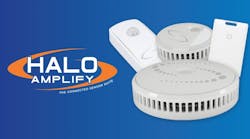Many of the estimated 18 million American small businesses are ideal targets for criminals. They are often open late with few staff members, they often keep valuable merchandise in stock and cash on hand – and despite their vulnerability, small businesses are vital to the nation’s economy, paying over 44 percent of the U.S. private payroll according to the Small Business Administration.
This year could prove to be even more of a challenge for small businesses. Law enforcement officials nationwide are predicting a rise in crime and police departments across the country are reporting shoplifting arrests up 10 to 20 percent over last year. In these tough economic times, it’s important for small business owners to reassess what they are doing to protect their businesses from burglary, robbery, shoplifting and fraud which, according to a study from the National Sheriff’s Association, causes at least 30 percent of all small business failures.
Crime can disrupt profits and destroy employee morale for larger companies, but one criminal act can be enough to devastate a small business. The potential for loss of revenue and merchandise can be overwhelming and crimes like robbery pose a serious threat to customer and employee safety.
The first and most important step in re-evaluating the security of your small business is prioritizing. Consider the risks most relevant to your business and tackle them first in order to develop a complete and effective plan. A comprehensive security plan might include both high and low-tech solutions to build a barrier against crime, protect your livelihood and proactively deter potential thieves.
There are solutions for just about every security risk. The key is to remember that no one security solution can stand alone; implementing a security plan that includes technology, design and employee involvement is the only way to fully secure your business.
Here are a few effective low-tech security solutions that may help keep costs down while making your businesses less attractive to thieves. Remember that the more obstacles placed in front of thieves, the more likely they are to look elsewhere for an easy target.
- Basics like adequate lighting, deadbolt door locks and unobstructed windows are easy places to start. Interior lighting should be visible to those outside, especially after closing. Exterior lighting should illuminate dark areas around buildings and parking lots. Make sure the view into and out of your business is clear by reducing advertising banners on front windows and displays behind windows.
- Create natural barriers around your business. Use landscaping around your building to obstruct potential getaway routes. Installing bollards around your building is another effective way to control access.
- Employees can be your most effective deterrent against shoplifting, but it’s also important to use background checks and other methods to screen all employees before hiring as the best defense against internal theft. Train new employees thoroughly on security and safety practices and instruct them to be the first line of defense in loss prevention. Greeting and acknowledging every customer who enters and providing personal service to as many people as possible are proven ways to discourage shoplifters.
- In addition to low-technology solutions, small business owners should implement a few crucial security technologies. The most important are video surveillance and monitored alarm systems. An obvious video surveillance system serves not only as a prevention tactic, but also as a deterrent against credit card and merchandise return fraud. Surveillance cameras also provide vital footage for law enforcement if a crime is committed. Once cameras are installed, place security signs at points of entry to publicize the presence of those cameras.
- Along with video surveillance, small retail businesses may wish to consider electronic article tagging to help prevent shoplifting. The number one reason for shoplifting is that it is easy, with little to no risk involved. Electronic article tagging creates risk and another potential stumbling block for shoplifters.
- Installing a monitored alarm system which allows for 24/7 monitoring of your business presents another significant hurdle to would-be thieves. In addition to giving the police early notification and a better chance of catching burglars, features like condition monitoring, such as temperature/flood detection, remote video management and access control provide an umbrella of safety for your business when you’re away.
- Small businesses should not have large amounts of cash in registers at any given time. Utilize a safe with a mechanism to make periodic drops during the day to minimize the amount of cash in registers. Immediately drop large bills, and publicize this to discourage potential robbers.
- Finally, install silent alarms. If a robbery does occur, silent alarms will give police a better chance to catch perpetrators by reducing response time.
It is impossible to completely eliminate the risk of crime, but small business owners can help minimize their risks by implementing a security plan that includes physical security technology, environmental design, well-trained training employees and troubleshooting potential weaknesses.
About the author: Joe Mac McConnell is vice president of small business for ADT Security Services. He started his service with ADT 18 years ago as a small business sales representative and then became a commercial sales representative. He then took on several senior management roles including residential sales and install manager, regional residential sales manager, senior regional residential manager, and national director of small business sales & marketing.< /i>


